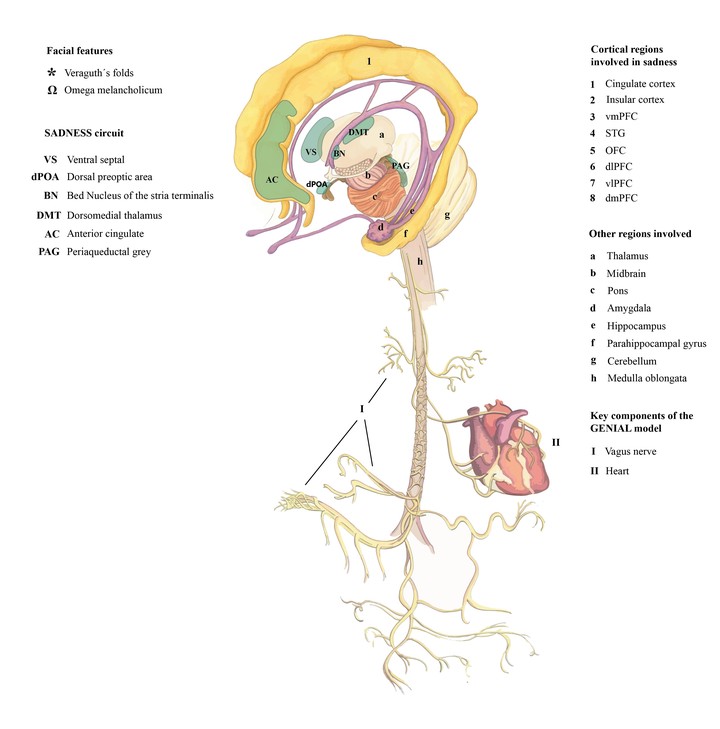The neuroscience of sadness: A multidisciplinary synthesis and collaborative review.
 Credit to the illustrator: Irene de Diego (airin.dd@gmail.com)
Credit to the illustrator: Irene de Diego (airin.dd@gmail.com)
Resumo
Sadness is typically characterized by raised inner eyebrows, lowered corners of the mouth, reduced walking speed, and slumped posture. Ancient subcortical circuitry provides a neuroanatomical foundation, extending from dorsal periaqueductal grey to subgenual anterior cingulate, the latter of which is now a treatment target in disorders of sadness. Electrophysiological studies further emphasize a role for reduced left relative to right frontal asymmetry in sadness, underpinning interest in the transcranial stimulation of left dorsolateral prefrontal cortex as an antidepressant target. Neuroimaging studies – including meta-analyses – indicate that sadness is associated with reduced cortical activation, which may contribute to reduced parasympathetic inhibitory control over medullary cardioacceleratory circuits. Reduced cardiac control may – in part – contribute to epidemiological reports of reduced life expectancy in affective disorders, effects equivalent to heavy smoking. We suggest that the field may be moving toward a theoretical consensus, in which different models relating to basic emotion theory and psychological constructionism may be considered as complementary, working at different levels of the phylogenetic hierarchy.